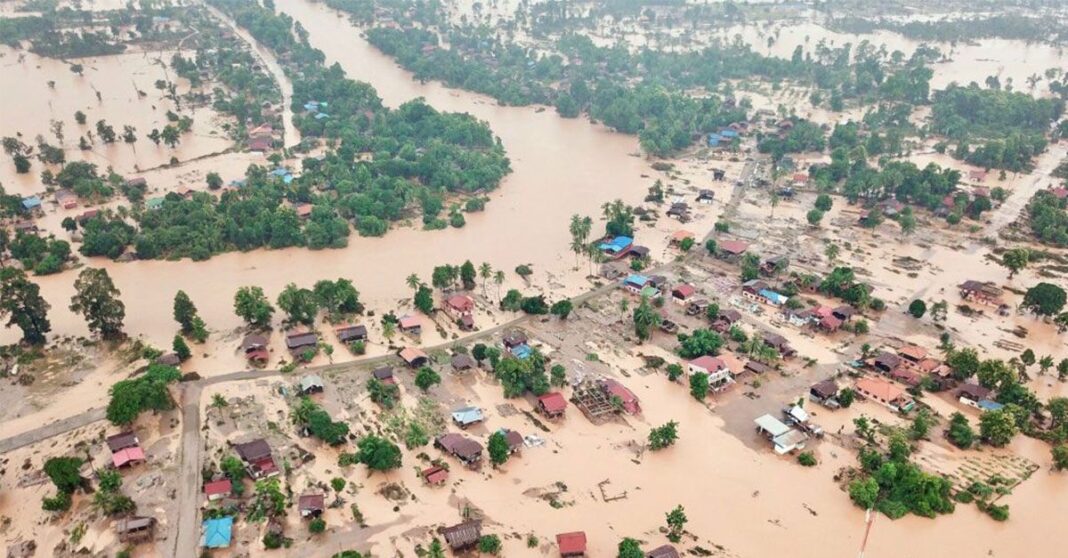BY Najma Sambul/ABC News – Southeast Asia is one of the most disaster-prone areas in the world, but a new study shows people living there feel more prepared than most in the face of disaster.
Roughly two-thirds of people surveyed from the region believe they could protect themselves and their families from a future disaster like a tsunami or earthquake, the World Risk Poll found.
The global study of people’s perceptions and experiences of risk and safety was conducted in 2023 by global analytics firm Gallup and commissioned by the global safety charity Lloyd’s Register Foundation.
It surveyed 1,000 respondents above the age of 15 across 142 countries.
In response to survey questions, people from South-East Asia scored highly in preparedness, household planning and feelings of agency when it came to disasters.
People in North America, which is significantly less disaster-prone, had similar results to South-East Asia for rates of household disaster plans (60 percent) and individual feelings of agency (67 percent), according to the research.
“Broadly speaking, the wealthier the country, the higher it scores on the World Risk Poll Resilience Index,” said Gallup research consultant Benedict Vigers, who worked on the survey.
But Southeast Asia bucked the trend, he said.
The World Risk Poll Resilience Index measured resilience in four categories: individual, household, community and societal.
“South-East Asia shows the world that resilience and preparedness can grow even outside high-income countries,” Vigers said.
“The three countries that rank highest for household planning are all in Southeast Asia — Philippines, Vietnam, Cambodia — and are all lower-middle income countries.”
Indonesia and the Philippines are home to many active volcanoes and are part of the so-called Pacific ring of fire, making them highly vulnerable to earthquakes and tsunamis as well as annual tropical storms.
Isabelle Baguisi, from Plan Philippine’s flood resilience project, said people in her country felt they needed to be positive because of the recurrence of monsoons and typhoons.
“Culturally Filipinos have a positive outlook but having positive outlook doesn’t always translate to positive coping mechanisms,” she said.
Research from the World Risk Poll showed 74 percent of adults in Southeast Asia said they had received at least one early warning before a disaster, including from social media and local government — placing them above the global average of 70 percent.
However, director of the resilience studies program at Northeastern University in the United States, Daniel Aldrich, said while some people may feel they are prepared for natural disasters it did not always translate in an objective sense.
“Preparedness is not the necessarily what you think you have […] there’s a big difference between imagined preparedness, reported preparedness and actual preparedness,” Aldrich said.
He pointed to objective measures like early warning systems, technology, strong infrastructure, and financial support being accessible to people in Southeast Asia to bolster disaster preparedness.
Baguisi agreed and said like others she was currently in the process of developing a flood preparedness plan in her household but poor early warning systems in the country were still a barrier.
“During Tyhoon Gaemi one of my colleagues couldn’t leave her apartment because of flooding […] it did come as a surprise and she didn’t get any kind of warning or advice that her area would be flooded,” she said.
“In our discussions with community partners like local government it’s clear there needs to be a way to contextualize and synthesize different sources of information people receive from social media, news, and local government, during a disaster or before,” she said.
The World Risk Poll acknowledged financial resilience has slipped in the region compared to 2021, when 30 percent of respondent said they could meet their basic household needs for less than a month if they lost all income.
This rose to 35 percent in 2023.
“Many people in parts of Southeast Asia lack the financial capacity to have a cell phone, or in a nation as a whole have that level of meteorological warning,” Professor Aldrich said.
Nevertheless, he said that after deadly, catastrophic disasters like the 2004 Boxing Day Tsunami that devastated coastal areas of the region, some countries in Southeast Asia learned from their mistakes.
“India did install an early warning system after the 2004 tsunami and it’s possible parts of Indonesia have that as well,” he said.



